One of my readers sent me an email and asked me if I would be interested in taking ownership of some of his vintage Macs. He was impressed with my collection as well as my dedication to all things vintage Apple. How could I refuse?
I offered to pay for shipping, but he wouldn't hear of it. It really is amazing how some people can be so generous.
He gave me a Mac SE, a
Mac Plus, a
40 SC External Hard Drive, as well as a ton of RAM sticks. I'll cover each one in a separate post. For now, I'll start with the SE.
This isn't a regular old SE. It's a SE FDHD. I've been dying to get my hands on a “Fat Mac” that can read 1.44 MB floppies ever since my Classic
bit the dust 2 and a half years ago. I've had my eyes on eBay for years, but people charge completely unrealistic prices on eBay. Charging $500 for a 30 year old computer that doesn't even work is insane. People see Apple logos and confuse them with dollar signs.
In any case, I was ecstatic to see that this was indeed an SE FDHD. It's pretty yellowed, but it's nothing a little retr0brite can't fix. With the nice weather around the corner, I won't have to wait months and months to restore it.

Ooh! A programmer's switch! These are hard to find, and are always a welcomed addition to any Mac.
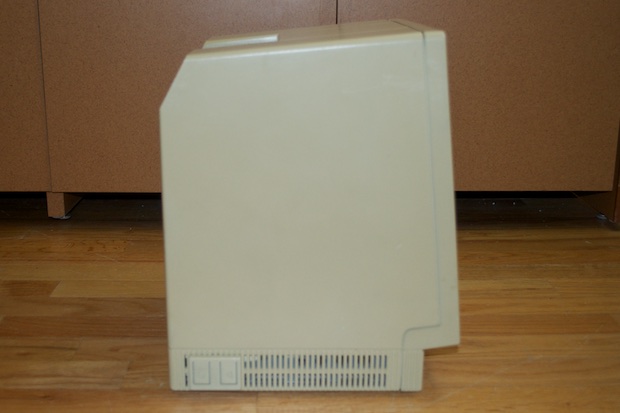
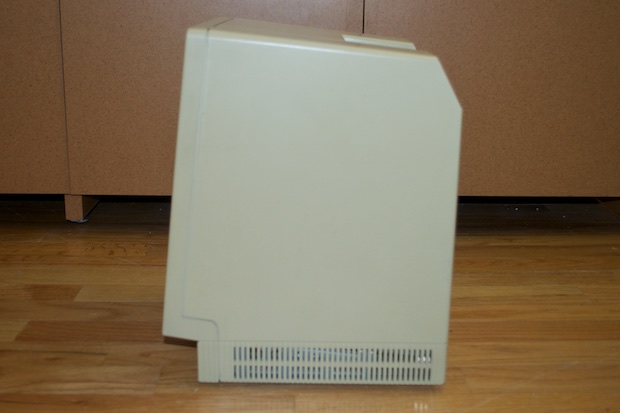
You can tell how discolored the Mac is from the spots that had stickers on it.

As it turns out, this is actually a good thing when it happens. I use those spots as a control when using retr0brite to restore the finish. You can use these unaffected spots to gauge when the plastic has been fully restored back to the original color.

Other than the yellowing, the machine is in great shape. There’s no chips, scratches, or gouges in the enclosure.
I never power up an old Mac without first opening it up to check out the logicboard. It's always a good idea to inspect the board for damage before powering it up. It the caps have leaked, or the battery has exploded, powering it up could do more harm that good.
It looks pretty good. I've seen my fair share of cobwebs, dead bugs, rust and dirt before. This machine is pretty clean.
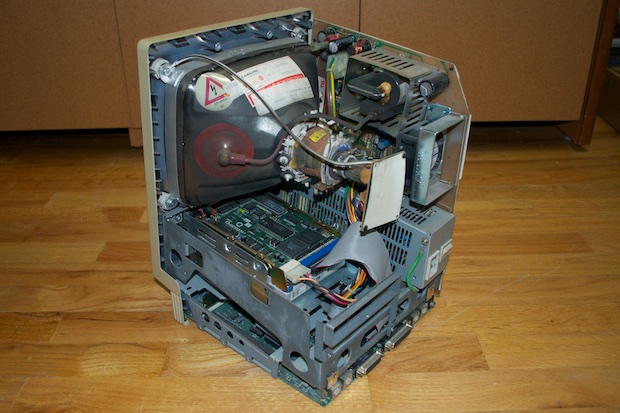
The board looks nice and clean too. No signs of corrosion. I immediately saw that blue rework wire and knew I was in for a surprise. Either this was a refurbished board, or a prototype.

I took a closer look at the sticker on the board. Not only is it a refurb, but it's an SE/30 board! That's even better than an SE FDHD. The only difference between a regular SE and an SE FDHD is that the FDHD has upgraded ROMs that allow it to read 1.44MB floppy disks. It still uses the same 68000 CPU, thus limiting it to 4 MB of RAM. The SE/30 on the other hand uses a 68030 CPU (thus the name) and can utilize up to 128MB of RAM. In addition, the 68030 runs at 16MHz; twice the speed of the SE models before it.
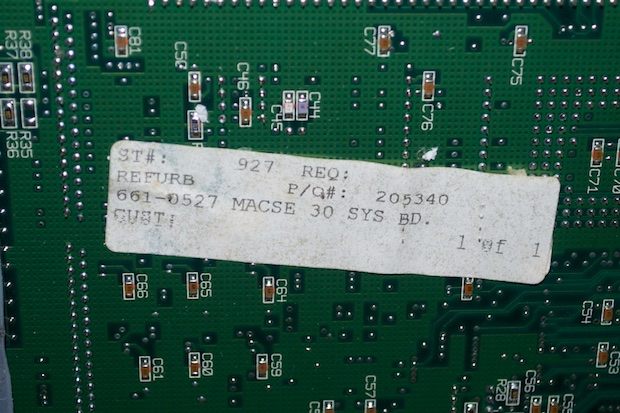
I pulled the board out for a closer look.

It is indeed an SE/30 board with a 68030 processor.
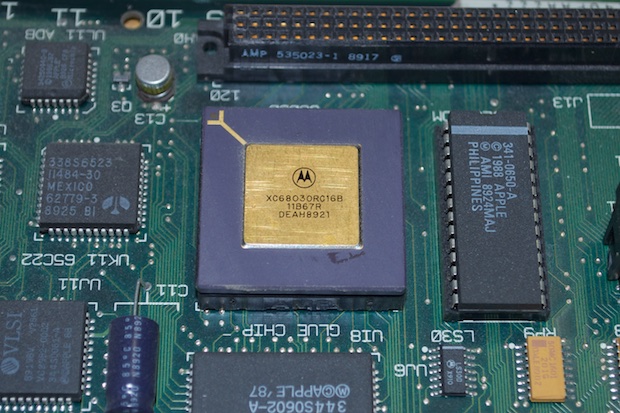
While I had the board out, I gave it a new PRAM battery and put it back into the machine.

I fired the machine up, but it just gave me a flashing question mark. Either the drive is dead, or it's been wiped clean. In my experience, most people don't wipe their machines before putting them into storage. When they get rid if it 20 years later, they rarely have the means to wipe the drive either. So if you get your hands on a classic Mac that gives you a flashing floppy question mark at boot-up, you can bet the drive is dead.
I popped in a System 7.0.1 Disk Tools startup disk and powered it on. It booted right up.
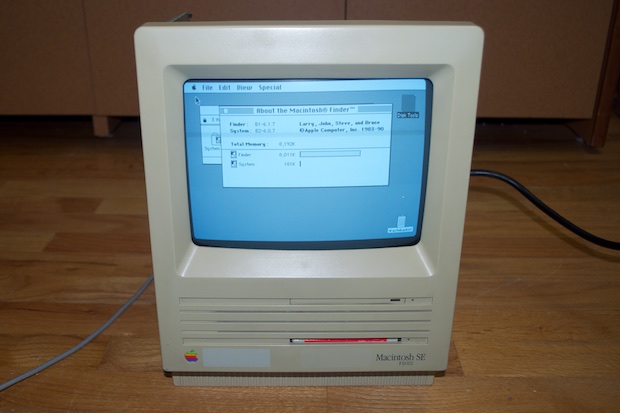
So the hardware works, it's just the hard drive that's dead. I was also happy to see that it has 8 Meg's of RAM, twice that of my
other SEs.
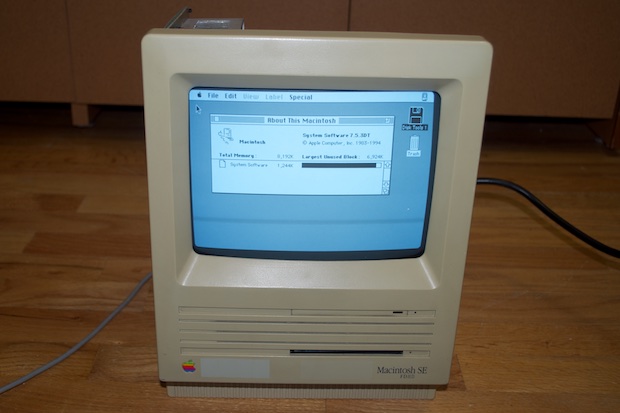
However, just for fun, I ran the HD Setup utility to see if the drive would be detected. No such luck.
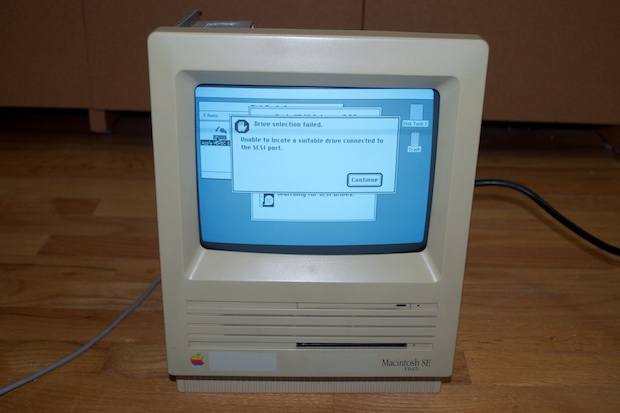
I dug through my pile of old hard drives to see if I could find one that worked. Most, if not all of them, are dead. However, I've seen in the past that one drive will work in one machine and not in the other. So, one of these drives that appeared dead in my machines in the past might just work in this one. I had my fingers crossed, but wasn't hopeful.
I freed the analog board so that I could get to the hard drive screws and took out the old drive.
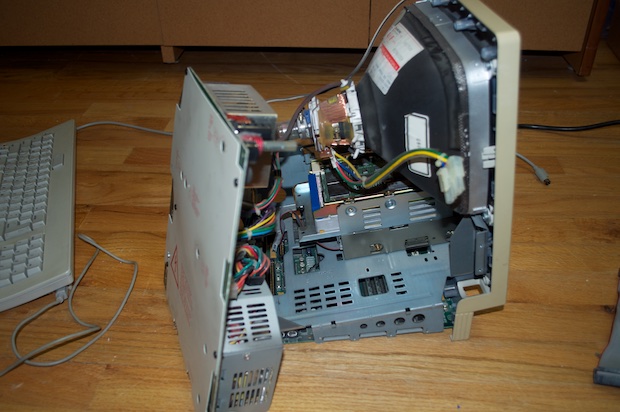
The SE FDHD shipped with either a 20 or a 40MB drive, so this machine had an upgrade in that department too. It has an 80 MB drive. These must have cost a fortune. Not to mention, 80 Megs must have blown people's minds. My Dad's SE had a 10 MB drive, and we though that was a lot.
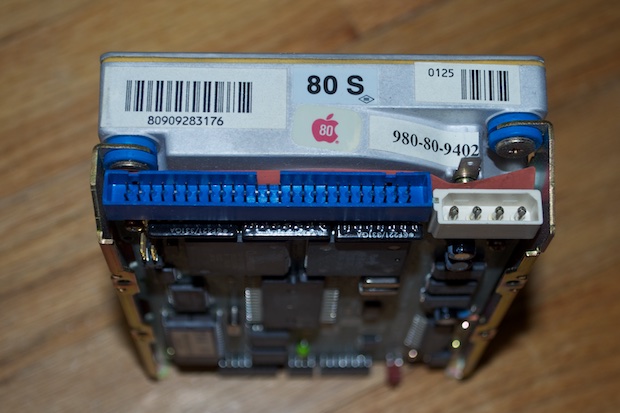
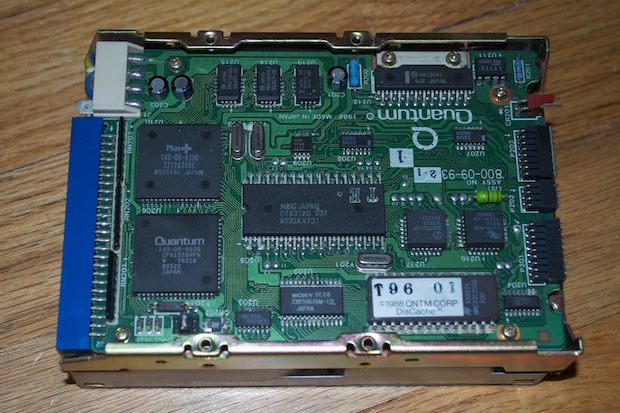
I tried a few 40 and 80 MB drives, but sadly, I couldn’t find a single one that worked. I guess these drives really are dead.
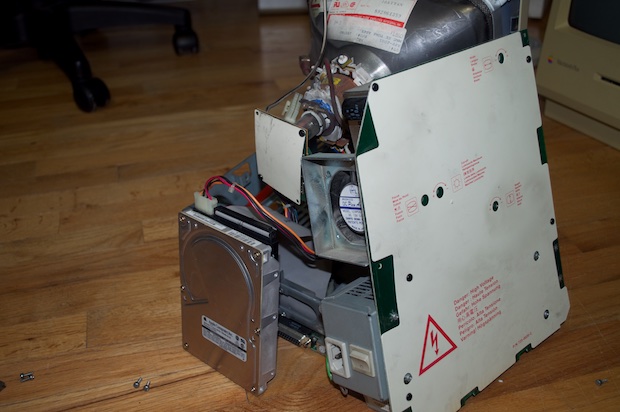
However, just to rule out the possibility that there wasn’t a logicboard issue and that the SCSI bus was toast, I decided to connect an
external SCSI drive and see if I could get it to boot. Leaky caps on a logicboard can cause all kinds of issues. Not to mention, leaky caps on an analog board can lead to underpowered hard drives.
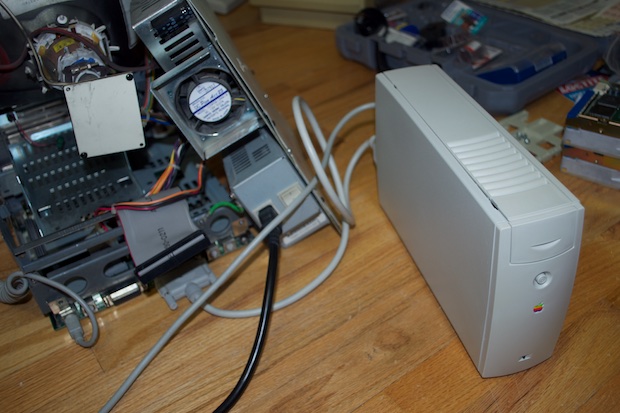
I powered it up again and it booted right into System 7.5 from the external drive. So it would appear that the SCSI bus was OK. I still won't know if it's the 12v rail that's underpowered; not without taking a few measurements.

So, the machine boots from floppies and external drives. I jumped on eBay and ordered a new 80 MB drive. I would love to have gotten a larger drive, but this one was only $15 bucks. Since the drive in my other SE is only 40MB, this feels like a nice upgrade.

Rather than take the whole machine apart and mount the drive, I want to make sure it works first. For now, I'll just connect it to the logicboard and leave it hanging out the back.
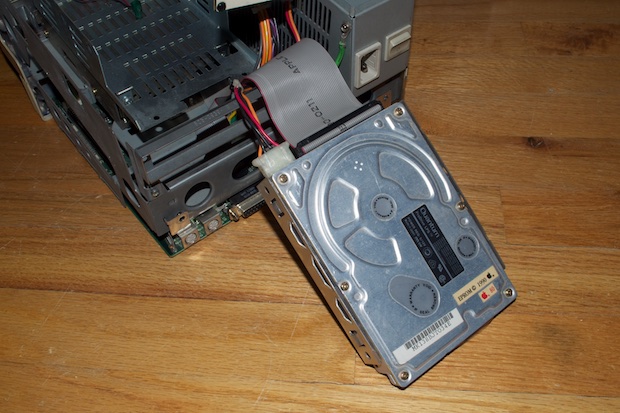
I powered up the machine and reached for my System 7.5.3 Disk Tools disk. When I turned back to the machine, it was already booting up!
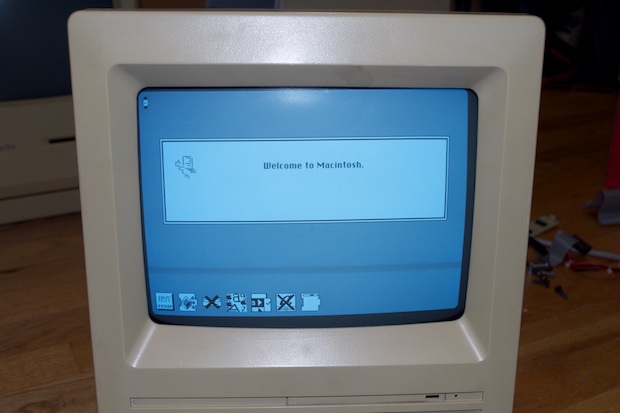
Not only is the drive good, but it's a bootable volume! Must have been a pull from an otherwise dead machine. It has System 7.1 on it. Unlike the previous System 7.5.3 Disk Tools disk I used, System 7.1 reports the machine as being an SE/30. More confirmation that the logicboard is indeed an SE/30. Sweet.
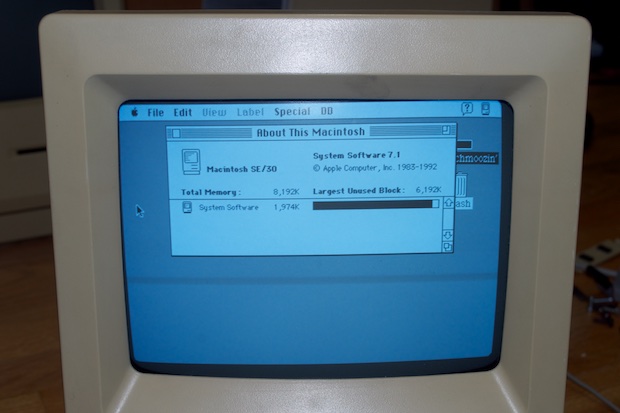
With that, I mounted the hard drive for good and connected the LED status light.

I then buttoned the whole thing back up. Now the machine is up and running and good to go. I can't wait until it gets a little warmer outside so I can give this machine the retr0brite treatment.


























